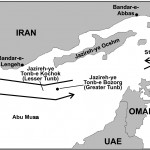China is already pursuing whats called the “˜string of pearls strategy in the Indian Ocean. It has set up or funded a string of maritime bases along shipping routes in the Indian Ocean, including the Pakistani port of Gwadar.
Finally, the aircraft carrier is symbolic for a growing power keen to impress its global peers. Despite The Economists claims that this ex-Soviet carrier is hardly a symbol of Chinese technological prowess, the ability to field an aircraft carrier in the decades ahead will be a very real symbol of Chinese power projection capabilities, at least to its smaller regional neighbours.
This single aircraft carrier is nothing new to be concerned about for the next few years for the USA, Taiwan and India ““ the Peoples Liberation Army Navy will have to learn how to operate such technology and develop the skills needed to wield sophisticated systems well over many years. Rightly so, a Chinese General stated that China needs three aircraft carriers to adequately “˜defend its interests. Although his concerns over three Indian and Japanese aircraft carriers existing by 2014 are too alarmist and optimistic of India and Japans naval infrastructure capacities, China will need three carriers at least if it wants to maintain an indefinite naval air capability. Provided of course that one of the carriers are not sunk in a conflict.
Aircraft carriers and their battle groups are necessary assets if a state wishes to be able to threaten or attempt to defend its sea lines of communication and shipping lanes from possible adversaries.
One carrier simply isnt enough for long operations. Witness the withdrawal of the French aircraft carrier from NATO operations in Libya for maintenance. The USN operates a rotation system ““ at any given time in normal peace conditions, a third of forces on active deployment, a third in training and the final third in maintenance and leave. Both China and India will need to do the same to be able to have staying power in a conflict, crisis or times of raised tensions. In a stand-up fight, attrition warrants more than one critical component; for example, if Chinas advantage in the South China Sea is dependent on one aircraft carrier, Vietnams priority will be to destroy one aircraft carrier and then deal with China on a more even playing field in both military terms and diplomatic leverage.
Taiwan need not be worried for the time being, as this carrier appears to be slated for training purposes, and an aircraft carrier is not necessary if China wished to forcibly enact the “˜One China policy. Chinas land-based air assets will be able to provide maritime air support, and land-based missile batteries and submarines will provide a sea denial capability against the USN.
Editors Pick
Aircraft carriers and their battle groups are necessary assets if a state wishes to be able to threaten or attempt to defend its sea lines of communication and shipping lanes from possible adversaries. China and India are not content on depending on others to guarantee shipping. Indeed, this shows arrogance on the part of the Americans and the Japanese; the very same reason they wield navies apply. The protection or harassment of shipping and energy routes is one of the reasons why the USN still wields eleven carriers. Amongst other reasons are of course to aid in expeditionary operations or amphibious assaults on land via the sea and to assist in humanitarian and rescue operations at and from the sea.
Would the United States like to justify its F-22 fighter, its electromagnetic railgun, or the Global Strike System programmes if it demands an explanation of Chinese naval air capability acquisition? The calls for transparency from Washington and Tokyo are justified, but this is not the way to go about it.




